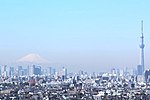Taigong was never emperor himself. In Japan the title was Daijō-tennō (kanji: 太上天皇; Hepburn: daijō-tennō), or just Jōkō (kanji: 上皇; Hepburn: jōkō). In Japan... 5 KB (539 words) - 06:19, 30 March 2024 |
 | of his son, Emperor Ninkō. After his abdication, he ruled as Daijō Tennō (太上天皇, Abdicated Emperor) also known as a Jōkō (上皇) until his death in 1840. The... 27 KB (2,334 words) - 01:28, 3 April 2024 |
Daijō Tennō or Dajō Tennō (太上天皇) is a title for an Emperor of Japan who abdicates the Chrysanthemum Throne in favour of a successor. As defined in the... 19 KB (831 words) - 01:20, 22 September 2023 |
 | when speaking Japanese. Emperor Akihito received the title Daijō Tennō (太上天皇, Emperor Emeritus), often shortened to Jōkō (上皇), upon his abdication on... 82 KB (9,720 words) - 20:59, 30 April 2024 |
 | the title of Jōkō (上皇, Emperor Emeritus), an abbreviation of Daijō Tennō (太上天皇), upon abdicating, and his wife, the Empress, became Jōkōgō (上皇后, Empress... 73 KB (4,463 words) - 06:37, 26 March 2024 |
(薬子の変, Kusuko no Hen), also known as the Retired Emperor Heizei Incident (平城太上天皇の変, Heizei-Daijō-tennō no Hen), occurred in the early Heian period. In 810... 11 KB (1,057 words) - 15:21, 6 February 2023 |

